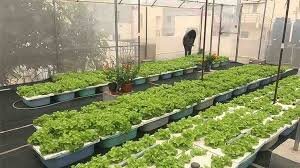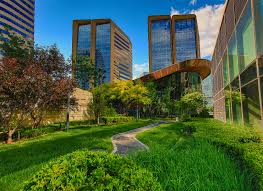Now Reading: How Urban Farming Is Changing Cities From the Top Down
-
01
How Urban Farming Is Changing Cities From the Top Down
How Urban Farming Is Changing Cities From the Top Down

Cities are growing fast. As more people move to urban areas, space becomes tighter, and the need for fresh food and clean air grows. In response to these challenges, many city planners and homeowners are turning to rooftop gardens and vertical farming. These green solutions are not only beautiful, but they also help solve serious environmental and food problems in cities.
Let’s explore how these two ideas are changing the way we live, eat, and breathe in our cities.
What Are Rooftop Gardens and Vertical Farms?

A rooftop garden is exactly what it sounds like—a garden on top of a building. These gardens can grow vegetables, fruits, herbs, flowers, or even just grass and trees. Some are small and personal, while others are large and shared by entire communities or apartment buildings.
Vertical farming, on the other hand, means growing food in layers—often indoors—using shelves, walls, or towers. This can be done in greenhouses, basements, or even in unused office buildings. LED lights, climate control, and hydroponic systems (which use water instead of soil) help plants grow faster and cleaner than in traditional farming.
Why Cities Need Green Solutions

Urban areas face many problems:
- Air pollution from traffic and industry
- Lack of green space and nature
- Limited access to fresh, healthy food
- Urban heat island effect, where cities become hotter due to buildings and concrete
Rooftop gardens and vertical farms offer simple and effective solutions.
Benefits of Rooftop Gardens

- Cleaner Air
Plants absorb carbon dioxide and release oxygen. A green roof can help improve air quality and reduce harmful gases. - Cooler Buildings
Rooftop gardens provide natural insulation. They keep buildings cooler in summer and warmer in winter, saving energy. - Stormwater Management
Plants absorb rainwater, which helps reduce flooding and water runoff in cities. - More Green Space
In busy cities with little open land, rooftops become valuable places to relax, garden, and connect with nature. - Community Engagement
Shared rooftop gardens can bring neighbors together, promote healthier eating, and support mental well-being.
Benefits of Vertical Farming
- More Food in Less Space
Vertical farming can produce large amounts of food in small areas. Some towers can grow hundreds of plants in just a few square meters. - Year-Round Growing
Because it’s often indoors, vertical farming is not affected by weather or seasons. That means fresh produce all year long. - No Pesticides or Soil Needed
Many vertical farms use hydroponics or aeroponics, which means cleaner food and less environmental damage. - Fewer Food Miles
Vertical farms can be built near where people live, reducing the distance food needs to travel. This means fresher food and lower carbon emissions. - Job Creation and Innovation
As more people learn about high-tech farming, new job opportunities and businesses are created in urban areas.
Real-World Examples Around the Globe
Many cities have already embraced these green solutions.
- New York City has several rooftop farms, like Brooklyn Grange, which grows over 50,000 pounds of produce each year.
- In Singapore, the government supports rooftop gardens on schools, malls, and housing complexes.
- Tokyo has vertical farms inside office buildings, using smart lighting and robots to grow lettuce and herbs.
- Paris is building Europe’s largest urban rooftop farm on top of an exhibition center.
These cities show that rooftop gardens and vertical farming are not just ideas—they are happening right now.
Challenges to Overcome
Even with many benefits, these systems come with challenges:
- Cost: Building and maintaining these farms can be expensive, especially with high-tech equipment.
- Rules and Permits: Some cities still have laws that make it hard to start rooftop or vertical farms.
- Maintenance: Green roofs need care, water, and skilled workers to manage them properly.
- Power Use: Vertical farms use a lot of electricity, especially for lighting and climate control.
Despite these issues, new technology and growing interest are helping lower costs and improve systems.
The Future of Urban Farming
As cities aim to become smarter and greener, rooftop gardens and vertical farms are likely to become a normal part of life. New buildings may include green roofs by design. Old buildings might be updated to include vertical gardens. And schools may start teaching kids how to grow food on-site.
With support from city governments, investors, and communities, urban farming could help feed millions of people, clean the air, and turn gray concrete jungles into vibrant green spaces.
Conclusion
Rooftop gardens and vertical farming are more than trends—they are powerful tools for a better urban future. They provide fresh food, clean air, cooler cities, and stronger communities. As we face climate change, population growth, and food shortages, these green solutions give us hope—and a path forward.
Whether it’s a few pots on a roof or a high-tech vertical farm, every little bit of green helps.
Read More:- Shobha Realty Launches Its Most Luxurious Project Yet—Full Details Inside 2025






















